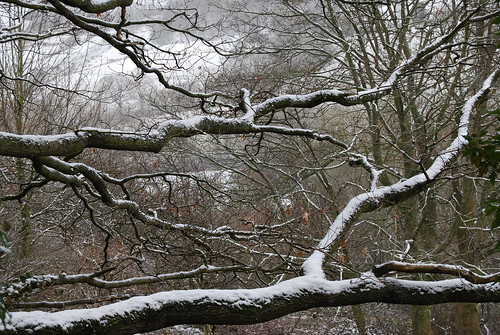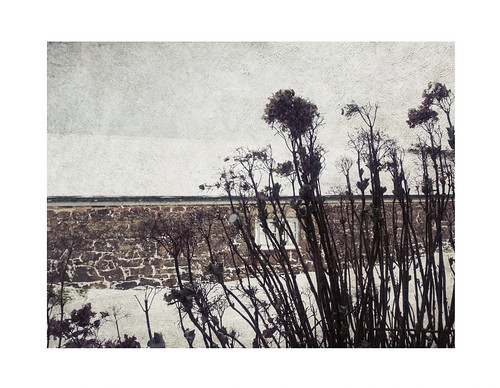Sequences and their predicted coding sequences utilizing the Gene Structure Display Server (GSDS) tool (Hu et al). BCCP protein sequences in G. arboreum, G. raimondii, G. hirsutum, and G. barbadense were ted to on the web MEME system (Bailey et al) for identification of conserved protein motifs. The MEME parameters have been as followsany quantity of repetitions, maximum number of motifs, and optimum motif widths from to AA residues.Plant Materials and Anxiety TreatmentsCotton seedlings of G. arboreum L. Var. Shixiya , G. raimondii, and G. hirsutum L. acc TM were grown in a temperaturecontrolled chamber having a photoperiod of h light and h darkness at C. Three seedlings at trefoil stage were exposed to low temperature (. C) for h and salt (mM NaCl) for h, respectively. Then the roots, stems, and leaves were sampled and frozen in liquid nitrogen promptly, and stored at C for RNA isolation. 3 biological repeats were performed for every remedy.RNA Isolation and Quantitative Reverse TranscriptasePolymerase Chain Reaction (qRTPCR)Roughly RNA was utilised for firststrand cDNAs Lp-PLA2 -IN-1 synthesis with the PrimeScript st Strand cDNA Synthesis Kit (TakaRa, Dalian, China) following the manufacturer’s guidelines. Genespecific primer pairs were created using Primer version . software program based on CDSs on the BCCP genes. The sequences from the primer pairs are listed in Supplementary Table . The qRTPCR evaluation was performed using the SYBR Premix Ex Taq (TakaRa, Dalian, China) following the manufacturer’s directions. In all of the qRTPCR analyses, the cotton UBQ gene was utilised as an internal reference. Every single sample was run with three biological replicates and three technical replicates on an ABI realtime PCR Program PubMed ID:https://www.ncbi.nlm.nih.gov/pubmed/7593735 (Applied Biosystems, Foster City, CA, USA). The thermal cycle applied was as followsC for s, followed by cycles of denaturation at C for s and annealing and elongation at C for s. The relative expression levels (RQ) had been calculated in line with the Ct technique (Livak and Schmittgen,).Analysis of Chromosomal Place and Gene DuplicationThe chromosomal localization of each and every BCCP gene in G. arboreum, G. raimondii, G. hirsutum, and G. barbadense was deduced according to the obtainable genomic facts in the CottonGen database (Yu et al). Mapchart version . application  (Voorrips,) was employed to visualize the distribution of BCCP genes on the chromosomes. Gene duplication events were defined when the following conditions had been fulfilledthe length of aligned sequence covered more than from the longer gene, the identity in the aligned regions was larger than , and only one duplication event was taken into counted for tightly linked genes (Jiang et al ; Wei et al ; Dong et al). In accordance with the chromosomal locations of BCCP genes, two kinds of gene duplications (tandem duplication and segmental duplication) were recognized.Estimating K a K s Ratio for MedChemExpress MRK-016 duplicated Gene PairsThe BCCP duplicated gene pairs of G. arboreum, G. raimondii, G. hirsutum, and G. barbadense had been firstly aligned by Clustal X version . program (Larkin et al). Subsequently, synonymous substitution (K s) and nonsynonymous substitution (K a) have been calculated working with the DnaSP version . software program (DNARESULTS GenomeWide Identification of BCCP Genes in GossypiumThe genomewide identification of BCCP genes have been performed around the basis of four cotton genome sequences, G. raimondii (Paterson et al), G. arboreum (Li et al), G. hirsutum (Zhang T. et al), and G. barbadense (Liu X. et al). BLASTP and BLASTN programs w.Sequences and their predicted coding sequences using the Gene Structure Display Server (GSDS) tool (Hu et al). BCCP protein sequences in G. arboreum, G. raimondii, G. hirsutum, and G. barbadense were ted to online MEME plan (Bailey et al) for identification of conserved protein motifs. The MEME parameters had been as followsany quantity of repetitions, maximum number of motifs, and optimum motif widths from to AA residues.Plant Components and Strain TreatmentsCotton seedlings of G. arboreum L. Var. Shixiya , G. raimondii, and G. hirsutum L. acc TM have been grown in a temperaturecontrolled chamber using a photoperiod of h light and h darkness at C. 3 seedlings at trefoil stage have been exposed to low temperature (. C) for h and salt (mM NaCl) for h, respectively. Then the roots, stems, and leaves had been sampled and frozen in liquid nitrogen straight away, and stored at C for RNA isolation. 3 biological repeats have been performed for every single treatment.RNA Isolation and Quantitative Reverse TranscriptasePolymerase Chain Reaction (qRTPCR)About RNA was employed for firststrand cDNAs synthesis together with the PrimeScript st Strand cDNA Synthesis Kit (TakaRa, Dalian, China) following the manufacturer’s directions. Genespecific primer pairs were designed applying Primer version . software program based on CDSs of your BCCP genes. The sequences from the primer pairs are listed in Supplementary Table . The qRTPCR analysis was performed with the SYBR Premix Ex Taq (TakaRa, Dalian, China) following the manufacturer’s instructions. In each of the qRTPCR analyses, the cotton UBQ gene was utilised as an internal reference. Each sample was run with three biological replicates and 3 technical replicates on an ABI realtime PCR System PubMed ID:https://www.ncbi.nlm.nih.gov/pubmed/7593735 (Applied Biosystems, Foster City, CA, USA). The thermal cycle applied was as followsC for s, followed by cycles of denaturation at C for s and annealing and elongation at C for s. The relative expression levels (RQ) had been calculated as outlined by the Ct system (Livak and Schmittgen,).Evaluation of Chromosomal Location and Gene DuplicationThe chromosomal localization of each BCCP gene in G. arboreum, G. raimondii, G. hirsutum, and G. barbadense was deduced based on the out there genomic info at the CottonGen database (Yu et al). Mapchart version . computer software (Voorrips,) was used to visualize the distribution of BCCP genes around the chromosomes. Gene duplication events had been defined when the following circumstances have been fulfilledthe length of aligned sequence covered extra than of the longer gene, the identity on the aligned regions was larger than , and only a single duplication occasion was taken into counted for
(Voorrips,) was employed to visualize the distribution of BCCP genes on the chromosomes. Gene duplication events were defined when the following conditions had been fulfilledthe length of aligned sequence covered more than from the longer gene, the identity in the aligned regions was larger than , and only one duplication event was taken into counted for tightly linked genes (Jiang et al ; Wei et al ; Dong et al). In accordance with the chromosomal locations of BCCP genes, two kinds of gene duplications (tandem duplication and segmental duplication) were recognized.Estimating K a K s Ratio for MedChemExpress MRK-016 duplicated Gene PairsThe BCCP duplicated gene pairs of G. arboreum, G. raimondii, G. hirsutum, and G. barbadense had been firstly aligned by Clustal X version . program (Larkin et al). Subsequently, synonymous substitution (K s) and nonsynonymous substitution (K a) have been calculated working with the DnaSP version . software program (DNARESULTS GenomeWide Identification of BCCP Genes in GossypiumThe genomewide identification of BCCP genes have been performed around the basis of four cotton genome sequences, G. raimondii (Paterson et al), G. arboreum (Li et al), G. hirsutum (Zhang T. et al), and G. barbadense (Liu X. et al). BLASTP and BLASTN programs w.Sequences and their predicted coding sequences using the Gene Structure Display Server (GSDS) tool (Hu et al). BCCP protein sequences in G. arboreum, G. raimondii, G. hirsutum, and G. barbadense were ted to online MEME plan (Bailey et al) for identification of conserved protein motifs. The MEME parameters had been as followsany quantity of repetitions, maximum number of motifs, and optimum motif widths from to AA residues.Plant Components and Strain TreatmentsCotton seedlings of G. arboreum L. Var. Shixiya , G. raimondii, and G. hirsutum L. acc TM have been grown in a temperaturecontrolled chamber using a photoperiod of h light and h darkness at C. 3 seedlings at trefoil stage have been exposed to low temperature (. C) for h and salt (mM NaCl) for h, respectively. Then the roots, stems, and leaves had been sampled and frozen in liquid nitrogen straight away, and stored at C for RNA isolation. 3 biological repeats have been performed for every single treatment.RNA Isolation and Quantitative Reverse TranscriptasePolymerase Chain Reaction (qRTPCR)About RNA was employed for firststrand cDNAs synthesis together with the PrimeScript st Strand cDNA Synthesis Kit (TakaRa, Dalian, China) following the manufacturer’s directions. Genespecific primer pairs were designed applying Primer version . software program based on CDSs of your BCCP genes. The sequences from the primer pairs are listed in Supplementary Table . The qRTPCR analysis was performed with the SYBR Premix Ex Taq (TakaRa, Dalian, China) following the manufacturer’s instructions. In each of the qRTPCR analyses, the cotton UBQ gene was utilised as an internal reference. Each sample was run with three biological replicates and 3 technical replicates on an ABI realtime PCR System PubMed ID:https://www.ncbi.nlm.nih.gov/pubmed/7593735 (Applied Biosystems, Foster City, CA, USA). The thermal cycle applied was as followsC for s, followed by cycles of denaturation at C for s and annealing and elongation at C for s. The relative expression levels (RQ) had been calculated as outlined by the Ct system (Livak and Schmittgen,).Evaluation of Chromosomal Location and Gene DuplicationThe chromosomal localization of each BCCP gene in G. arboreum, G. raimondii, G. hirsutum, and G. barbadense was deduced based on the out there genomic info at the CottonGen database (Yu et al). Mapchart version . computer software (Voorrips,) was used to visualize the distribution of BCCP genes around the chromosomes. Gene duplication events had been defined when the following circumstances have been fulfilledthe length of aligned sequence covered extra than of the longer gene, the identity on the aligned regions was larger than , and only a single duplication occasion was taken into counted for  tightly linked genes (Jiang et al ; Wei et al ; Dong et al). As outlined by the chromosomal places of BCCP genes, two sorts of gene duplications (tandem duplication and segmental duplication) were recognized.Estimating K a K s Ratio for Duplicated Gene PairsThe BCCP duplicated gene pairs of G. arboreum, G. raimondii, G. hirsutum, and G. barbadense had been firstly aligned by Clustal X version . system (Larkin et al). Subsequently, synonymous substitution (K s) and nonsynonymous substitution (K a) have been calculated employing the DnaSP version . software (DNARESULTS GenomeWide Identification of BCCP Genes in GossypiumThe genomewide identification of BCCP genes have been performed on the basis of four cotton genome sequences, G. raimondii (Paterson et al), G. arboreum (Li et al), G. hirsutum (Zhang T. et al), and G. barbadense (Liu X. et al). BLASTP and BLASTN programs w.
tightly linked genes (Jiang et al ; Wei et al ; Dong et al). As outlined by the chromosomal places of BCCP genes, two sorts of gene duplications (tandem duplication and segmental duplication) were recognized.Estimating K a K s Ratio for Duplicated Gene PairsThe BCCP duplicated gene pairs of G. arboreum, G. raimondii, G. hirsutum, and G. barbadense had been firstly aligned by Clustal X version . system (Larkin et al). Subsequently, synonymous substitution (K s) and nonsynonymous substitution (K a) have been calculated employing the DnaSP version . software (DNARESULTS GenomeWide Identification of BCCP Genes in GossypiumThe genomewide identification of BCCP genes have been performed on the basis of four cotton genome sequences, G. raimondii (Paterson et al), G. arboreum (Li et al), G. hirsutum (Zhang T. et al), and G. barbadense (Liu X. et al). BLASTP and BLASTN programs w.